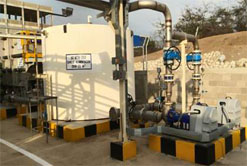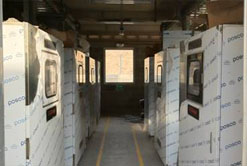"15 Successful years with 50+ Major Global Projects."
The hydroxyl radical, (OH-) is the neutral form of the hydroxide ion (OH−). Hydroxyl radicals are highly reactive and consequently short-lived. Hydroxyl radicals play a key role in the oxidative destruction of organic pollutant.
The hydroxyl radical is often referred to as the “Cleaner” of the troposphere. It reacts with many pollutants, decomposing them through "cracking", often acting as the first step to their removal. It also has an important role in eliminating some greenhouse gases like methane and ozone.
These reactive species are the strongest oxidants that can be applied in water and can virtually oxidize any compound present in the water matrix, often at a diffusion controlled reaction speed. Consequently, - OH reacts unselectively once formed and contaminants will be quickly and efficiently fragmented and converted into small inorganic molecules. Hydroxyl radicals are produced with the help of one or more primary oxidants (e.g. ozone, hydrogen peroxide, oxygen) and/or energy sources (e.g. ultraviolet light) or catalysts (e.g. titanium dioxide)
Ozone based
O3 + HO− → HO2− + O2 (reaction between O3 and a hydroxyl ion leads to the formation of H2O2 (in charged form))
O3 + HO2− → HO2• + O3−• (a second O3 molecule reacts with the HO2− to produce the ozonide radical)
O3−• + H+ → HO3• (this radical gives to •OH upon protonation)
HO3• → •OH + O2
The reaction steps presented here are just a part of the reaction sequence
Advantages
1. They can effectively eliminate organic compounds in aqueous phase
2. It virtually reacts with almost every aqueous pollutant without discriminating.
3. Complete reduction product of OH− is H2O, so it does not introduce any new hazardous substances into the water.
4. Simple equipment, easy to operate problems.
5. Color & odour free potable water.



